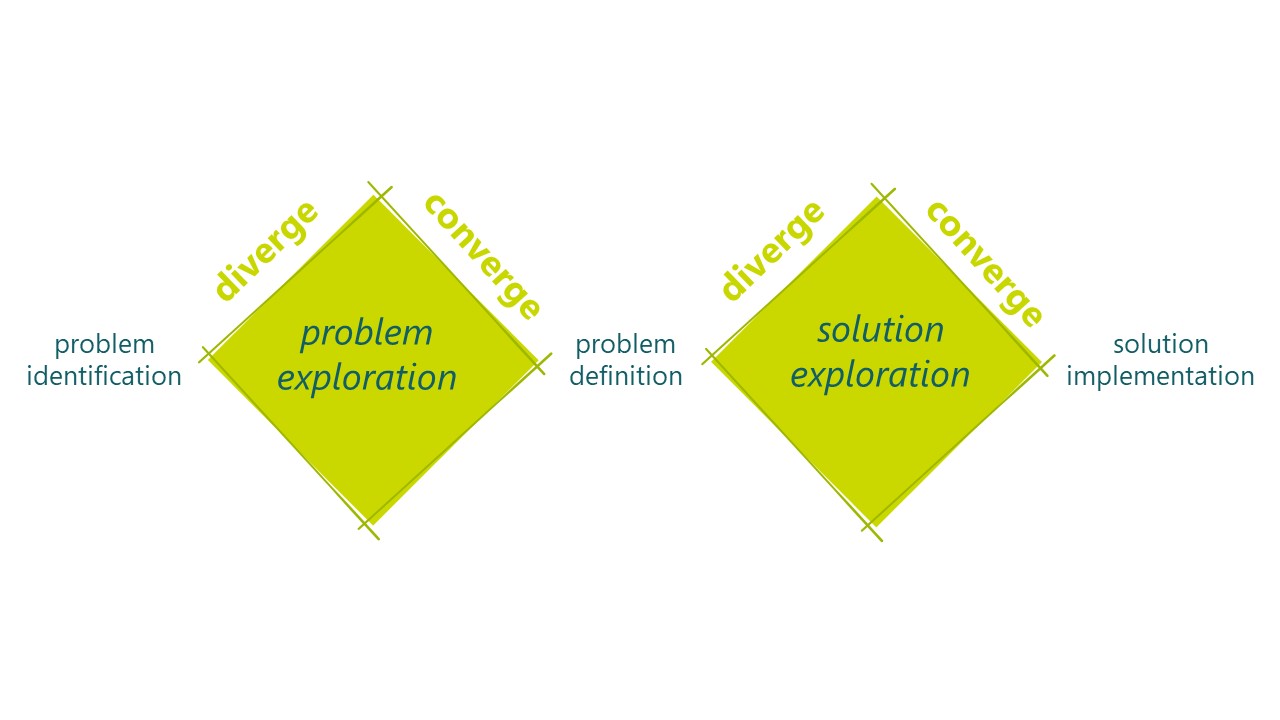We're celebrating our fifth anniversary, take a look at our highlights from the year.
Business
How to improve problem-solving skills in your business
Business
How to improve problem-solving skills in your business
Problem-solving expert, Nathan Crilly, Professor of Design at the Department of Engineering, University of Cambridge, and Academic Lead of the Cambridge Advance Online course on Creativity, Problem Solving and Design Thinking.

Challenges are inevitable, especially in the fast-paced world of business – it’s how we tackle them that makes all the difference. Problem-solving is absolutely critical for business success, helping teams face challenges head-on and turn them into golden opportunities. By honing this skill, businesses can boost their strategic thinking, decision-making and overall edge in the market. Effective problem-solving can also make for a happier workplace, encouraging teamwork and keeping employees motivated, which in turn helps with staff retention.
With employers predicting that 44% of workers will have their skills disrupted over the next five years, there is a strong demand for cognitive skills related to problem-solving and it is projected to grow further. The World Economic Forum’s 2023 Future of Jobs Report(Opens in a new window) highlights that analytical and creative thinking are the most important skills for workers. As AI continues to reshape the world of business, employees who are able to think creatively and identify and tackle challenging problems are more invaluable than ever. This applies across a wide range of industries in both private and public sectors.
In this article, we ask Nathan Crilly(Opens in a new window), Professor of Design in the Department of Engineering at the University of Cambridge and Academic Lead of the Cambridge Advance Online course on Creativity, Problem Solving and Design Thinking(Opens in a new window), to share his practical strategies for improving problem-solving skills in business.
Strategies to develop problem-solving skills
There are four crucial stages when it comes to honing problem-solving skills within a business context:
Reviewing processes
Almost every business activity can be seen as a creative challenge to be solved – from how to improve financial processes to how to boost customer engagement. A good place to start when tackling any business challenge is by going back to basics: reviewing existing processes and looking at what works and what doesn’t work. You might start by asking these questions:
Are there any bottlenecks or inefficiencies that could be streamlined?
Are there any business processes that could be skipped or revised to reduce unnecessary steps, helping to reduce costs and increase output at the same time?
Once processes have been reviewed and improved, communicate this around the team or organisation to advertise the opportunities that exist to solve problems, advises Professor Crilly. Encourage others to look for similar opportunities and empower them to own and implement the improvement process.
Training and development
‘Organisations that truly value creativity and problem-solving skills embed these approaches in the very structure of their operations – starting with training and developing their team members,’ says Professor Crilly.
As an example, Professor Crilly cites the tech giant IBM(Opens in a new window), which has invested considerable resources into training its entire workforce in Design Thinking – a framework used to develop innovative solutions in a human-centred way.
This design-focused approach to problem-solving has now been embedded in organisations of all sizes around the world, helping to increase innovation, improve customer focus, increase efficiency and effectiveness and improve employee satisfaction. However, developing these skills takes time and effort, requiring a commitment to training and lifelong learning, as well as the self-awareness to reflect on and improve approaches to identifying and tackling challenges.
Fostering a supportive company culture
‘It’s easy for organisations to say that they value creativity and problem-solving skills in the workplace, and to have these terms appear in their mission/vision statements,’ says Professor Crilly. ‘However, the question is really what an organisation is prepared to do to foster and sustain a creative culture? Is it a feature of recruitment processes, training plans, staff review documentation? Are the reward and progression incentives actually aligned around creative work, or is everyone motivated to just keep doing the same thing and avoid mistakes?’
To support creative work, it is essential to develop a company culture characterised by open collaboration, psychological safety, risk-taking and diversity. When employees feel appreciated and supported as individuals, they are far more likely to step up and get creative with their ideas. Celebrating wins and learning from setbacks not only help boost company morale but also encourage a proactive attitude towards tackling challenges, as well as helping to develop a positive workplace environment with strong employee engagement.
Encouraging creative thinking
‘Creativity and innovation require doing new things, which means sometimes getting things wrong and learning from that,’ says Professor Crilly. Creative problem-solving involves looking beyond conventional solutions and experimenting with innovative ideas. Supporting employees with the resources they need (including time, space, people and money) to think out of the box and view problems from a different perspective can lead to breakthrough solutions that can help to transform a business.
The four steps of problem-solving in business
When solving problems, it’s important to break down the process into different activities, says Professor Crilly. Here are four activities he recommends to achieve problem-solving success:
1. Identify the problem
The first step to solving any problem is to clearly define it. This means gathering information, understanding the context and identifying the issues at stake.
‘It’s not always the case that a problem is handed to us in neatly packaged way,’ Professor Crilly explains. ‘Instead, we often need to find problems for ourselves, which requires us to be sensitive to messy situations and see opportunities for change, disruption or improvement.’
He points out that many great inventions and innovations are solutions to problems that others might not have recognised as problems at all. While many in an organisation might see a particular business process as inherently difficult, for example, it only takes one person to recognise that an alternative is possible – and to champion that possibility.
See Professor Crilly’s blog article Problem solve like a pro(Opens in a new window) for more on this.
2. Generate possible solutions
There are a range of possible idea generation techniques, but brainstorming is perhaps the most popular. It’s important to encourage creativity and consider all ideas, no matter how unconventional.
‘All kinds of drawings, diagrams, maps and charts can be extremely valuable for eliciting, capturing, generating, developing and sharing ideas,’ says Professor Crilly, who suggests working in a mixture of smaller and bigger groups for the best results.
‘People assume that creative sessions, such as brainstorming, should be conducted entirely in groups,’ he says. ‘However, there are benefits to structuring the sessions so that people can work as individuals, sub-groups and groups, and move between these arrangements, sometimes iteratively.’
3. Evaluate and select solutions
Once the brainstorming is over, the next step is to evaluate the feasibility, risks and benefits of each potential solution. Carefully weigh these factors to determine which strategy aligns best with your business goals. Then you can select the most effective approach to move forward.
‘Our initial understanding of the problem may set us off in useful directions,’ says Professor Crilly. ‘But we often only truly understand the problem when we are generating and testing ideas for solutions. As such, we shouldn’t remain fixed in the interpretation of the problem that we started with.
‘Sometimes problem iteration can be quite subtle, such as when we add minor requirements or identify additional stakeholders,’ he adds. ‘However, in other instances, we might develop an idea that is really a solution to some other problem altogether, one that might be worth pursuing as an opportunity in its own right.’
4. Implement and review
Put your chosen solution into action and keep an eye on how well it works. Be ready to tweak things based on feedback and results as they come in. This way, you can keep improving and make sure you’re on track to meet your business goals.
‘In some contexts, what is required is a good match between a problem and a solution, even if neither is what you started with,’ says Professor Crilly. ‘For example, we might develop a new smartphone app to address a specific social problem, but if people subsequently use it to effectively solve some other problem, then we might just reorient our efforts to address that new opportunity.’
Visualising the process
These problem-solving steps can be visualised in the following way, inspired by the work of the Creative Problem-Solving community and the Design Council’s Double Diamond model:

Image source: The Double Diamond by the Design Council(Opens in a new window) is licensed under a CC BY 4.0 license. (Opens in a new window)
1. Problem identification
Being sensitive to opportunities to improve things; noticing that things are not as good as they could be.
2. Problem exploration
Not just accepting the first interpretation of the problem but exploring alternatives, including:
divergent phase of opening up the space of possibilities: abstracting the problem to a more general level; reframing the problem to see it from different perspectives
convergent phase of closing down the space of possibilities: selecting the most promising problems.
3. Problem definition
Representing the problem in ways that don’t assume specific directions for finding solutions; communicating the problem to the team members or stakeholder who will engage with it.
4. Solution exploration
Not just accepting the first possible solution, but exploring alternatives, including:
divergent phase of opening up the space of possibilities: individual and group idea generation sessions, co-design, prototyping, etc
convergent phase of closing down the space of possibilities: selecting and refining the most promising solutions.
5. Solution implementation
Representing the solution in ways that don’t assume specific directions for finding solutions; communicating the problem to the team members or stakeholder who will engage with it.
As Professor Crilly explains, ‘There are two reasons that this visualisation is especially useful: first, it emphasises that problem exploration is just as important as solution exploration; second, it emphasises that divergent thinking is just as important as convergent thinking.’
These points are critical, he says, because people often think that creativity is only about solving problems (rather than also finding them), and that it’s all about generating lots of ideas (rather than also narrowing those ideas down).
Key takeaways for effective problem-solving
From refining processes to nurturing creative thinking, the key problem-solving approaches explored above are crucial for staying agile and competitive in today’s dynamic business environment:
Training for innovation: Invest in training programmes that promote creative problem-solving techniques, fostering a culture of continuous learning and improvement.
Cultivate a supportive culture: Create an environment that encourages open communication, teamwork and risk-taking, empowering employees to contribute innovative solutions.
Promote creative thinking: Catalyse creativity by embracing diverse perspectives and providing resources for experimentation, driving innovation and adaptation in response to business challenges.
Review and refine problem-solving processes: Frequently assess and improve ways of addressing problem-solving to make sure processes are fit for purpose.
Professor Crilly emphasises that enhancing problem-solving skills within your business is a continuous and evolving journey. By investing in training, fostering creative thinking and cultivating a supportive company culture, you can empower your team to tackle challenges more effectively and propel your business to new heights.
Professor Crilly’s expertise in the fields of problem-solving, idea generation and design thinking, honed over many years in the University of Cambridge’s Department of Engineering, has now been condensed into an invaluable six-week course offered by Cambridge Advance Online. Through Creativity, Problem Solving and Design Thinking(Opens in a new window), Professor Crilly has delivered world-leading training to hundreds of professionals across a broad range of sectors – including management consultancy, healthcare, legal services, education, design and innovation.
Enrol today to tap into Professor Crilly’s expert problem-solving expertise and to start your journey towards becoming a problem-solving pro, giving you and your team valuable tools to tackle today’s business challenges head-on.
Discover Cambridge Advance Online’s six-week course on Creativity, Problem Solving and Design Thinking(Opens in a new window)
Read Professor Crilly’s Q&A on the Problem Solving and Design Thinking course here(Opens in a new window)
References:
Crilly, N. (2023). ‘Problem solve like a pro.’ University of Cambridge Online, 15 Dec 2023. https://advanceonline.cam.ac.uk/blog/problem-solving(Opens in a new window) accessed 01 July 2024.
World Economic Forum. (2023). Future of Jobs Report 2023. Insight report, World Economic Forum. https://www3.weforum.org/docs/(Opens in a new window)WEF_Future_of_Jobs_2023(Opens in a new window).pdf accessed 01 July 2024.


